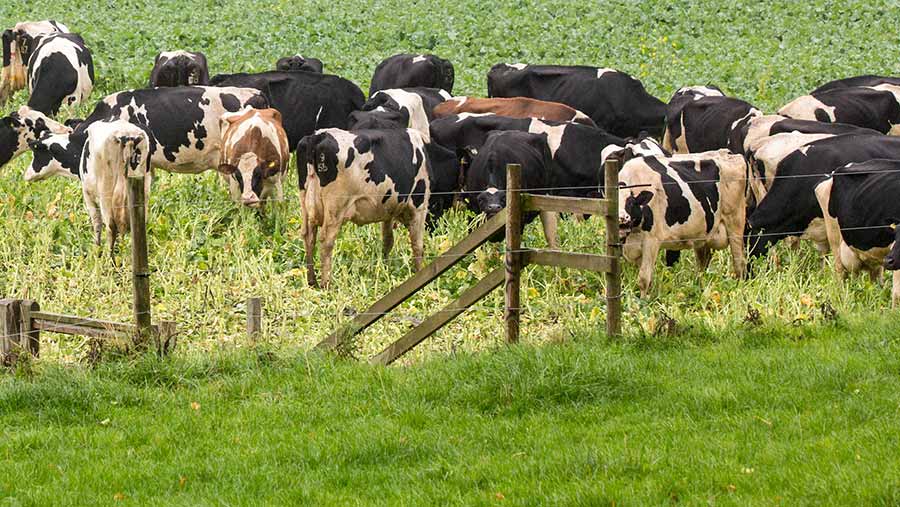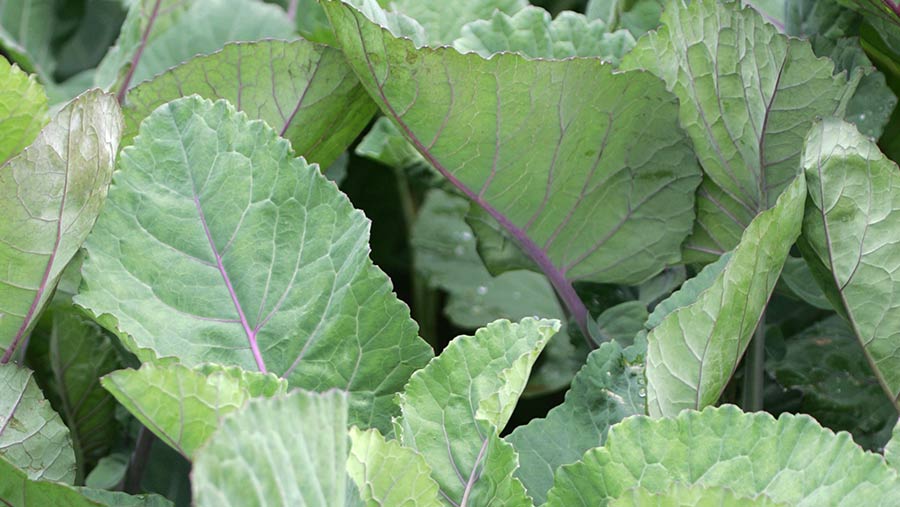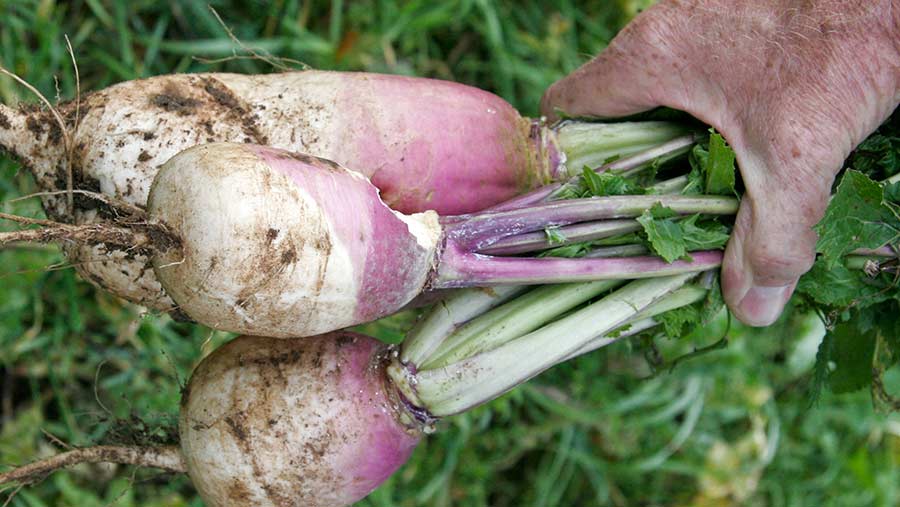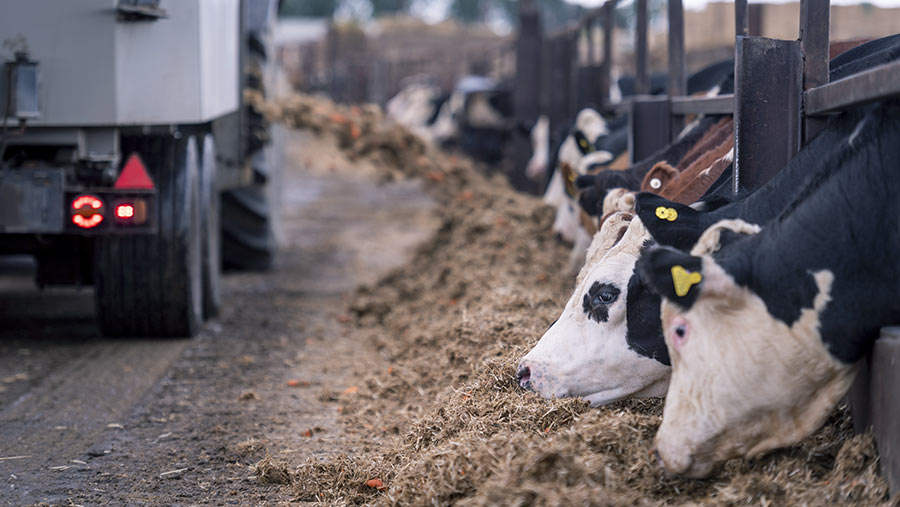Eliminating winter housing for cattle: options compared
 © Tim Scrivener
© Tim Scrivener An end to direct farm subsidies in some UK regions post Brexit has focused farmers’ minds on cutting winter housing costs.
It costs between £1.20-£1.50 a head a day to house cattle, but wintering outdoors offers dairy and beef producers an alternative that can halve expenditure in some situations.
Whether it’s a self-feeding system on grass or a forage crop, or wintering cattle in a well-designed woodchip corral, each can remove some of the pressure during the housing period.
We spoke to three specialist consultants to examine the options.
1. Fodder crops
Well-managed brassica and forage crops can provide cheap, high-quality feed, but before allocating land and planting, an important first step is to create a feed budget, to work out how much crop you need.
This will vary according to animal type and the crop being grown, because there is a variation in the dry matter (DM) yield of feeds such as fodder beet, kale and swedes.
See also: How next generation are learning to farm livestock without subsidies
How it works
As a starting point, Adas consultant and beef farmer Marc Jones, who outwinters his own cattle on fodder beet, recommends calculating how many kilogrammes of DM each animal needs for the winter.
As a guide, for a dry suckler cow he advises 12kg and for growing cattle, 2.5% of their bodyweight.
For growing animals it can be tricky to work out an accurate requirement, so factor some leeway into your calculations.
As forage crops and brassicas are generally lacking in structural fibre, an additional source of coarse fibre is needed to maintain rumen function.
Big bale silage is ideal for this so, once the total number of hectares of fodder crop needed has been calculated, work out the number of bales required.
“For cattle on fodder beet, we aim for growing cattle weighing 400-450kg to have 12kg DM in front of them. That figure includes 2-3kg of silage,’’ explains Mr Jones, who is growing 21ha of fodder beet this year.
Estimate expected yield for each crop – for fodder beet expect 25t DM/ha, for kale and swedes 8-9kg DM/ha.

© Tim Scrivener
See also: Advice on using brassicas for outwintering
Give cattle access to a relatively small area of fresh crop daily to maximise use; strip-graze and back-fence too when it is wet. In this situation, providing a water source can be a challenge.
But Mr Jones says a drag trough, used in conjunction with 200-300m of blue polythene pipe, allows him to move the water supply with the cattle.
“This is reasonably low cost and so is the fencing. You just need one electric fence line in front of the cattle and a second as backup in case they break through,’’ he says.
For sloping fields, always feed down the hill to help prevent run-off. “You want to be rolling silage ring feeders down the hill, not up it,’’ Mr Jones points out.
As a buffer, set up an electric fence approximately 3.6m from the hedge around the entire perimeter of the field.
1ha of fodder beet will feed 16-17 yearling cattle for five months. For kale or swede, 1ha will feed six to seven yearling cattle weighing 400-500kg for five months.

© Tim Scrivener
For fodder beet, allocate 3.6m sq a head a day. For swedes and kale, 11.25m sq a head a day is required.
Managed correctly, fodder beet will support a daily liveweight gain (DLWG) in growing cattle of 0.8-1 kg/day.
For kale and swedes, performance is generally lower – expect dairy heifers to grow at 0.4-0.6kg/day.
Key considerations
- Free-draining soil is a must. To avoid issues with run-off, don’t select a steep field – a slight slope is OK, but the flatter, the better.
- Ensure any wet patches are drained prior to outwintering..
- In wet conditions, better management is required. This might mean moving the back fence daily rather than once a week, so flexibility is key.
- Forage crops are mostly low in the trace elements copper, selenium, manganese, zinc, cobalt and particularly iodine, so animals should either be bolused or have access to minerals.
- A good stone surface is needed in gateways.
Benefits
- Low labour input – Mr Jones says it takes him 20-30 minutes a day to feed 350 cattle
- Cattle are generally healthier, with little or no incidence of pneumonia
- Costs compared to housing are about 40 to 50% lower
Disadvantages
Land will need ploughing in the spring and it may also be necessary to subsoil, but Mr Jones says it is rare for compaction to go further than the plough layer.
Cost
- £1,100/ha for fodder beet*
- £560/ha for swede and kale*
*inclusive of £250/ha rent
2. Deferred grazing
Livestock are removed from grassland in late summer to allow a wedge of grass to build up, to feed in the late autumn and early winter.
Growth in the period between fields being set aside and grazed can be 1-2t DM/ha.
Deferred grazing can work well as a way of extending the grazing into late autumn and early winter.
It can be used for cattle that have lower feed requirements, such as spring-calving beef and dairy herds, but it needs careful monitoring.
How it works
Close fields earmarked for winter grazing in August or September. Make sure they are well grazed to remove the risk of dead material being present in the sward when you turn in cattle later in the year.
Aim to close fields at 1,500-1,800kg DM/ha, about 4-6cm, explains independent livestock consultant Liz Genever.
The longer the field is shut up before grazing, the more dead material that will build as a result of leaves dying away. Therefore, a balance needs to be struck between shutting-up date and yield.
“The covers need to be clean, so you stockpile green leaf and not poorly used grass from earlier in the season.
“If the leys are quite clean when they are shut up, they will be high quality, so you can reduce the allocation. This helps with rationing.’’
If grass quantity needs to be boosted and there is enough moisture and ground conditions are good, an application of nitrogen – about 30kg/ha – could be applied in August. Expect a response rate of about 10kg DM to every 1kg N.
Block or strip-graze in the autumn/winter. The decision on when to graze depends on whether the requirement is for quality or quantity – graze earlier for higher-quality grass at the expense of yield or later if yield is the main consideration.
Key considerations
- Ideally use fields that are free-draining on farms in a relatively low-rainfall area.
- Pasture should have reasonably dense swards to protect it from damage and to minimise soil damage.
- Dr Genever advises against grazing a reseed unless it was well established – it is best suited for fields with longer-term leys or permanent pasture.
- Some farmers use deferred grazing as a means of clearing out permanent pasture for the spring or if they are planning to reseed a field, as it can be used as a sacrifice field if additional bales are added in.
- Back-fencing is recommended to protect the areas of the field that have been grazed.
- Animals need to be in good body condition and may lose weight on the system, so the right type need to be selected, such as dry suckler cows with low maintenance requirements.
Benefits
- Cheaper than establishing a brassica.
- High in fibre, with quality comparable to medium-quality silage.
Disadvantages
- Can only reduce the housing period for up to two months.
- Yield is low compared with brassicas – 1-2t DM/ha compared with catch crop brassicas at 4-6t DM/ha.
- Deferred grass is potentially low in energy. Stock won’t necessarily finish on it, but it is a good system for holding dry cows on.
- For dairy heifers, it depends where they are in terms of growth targets. If they are below weight targets, they should be prioritised on to other feeds, but if they are at or above target, this system could work for them.
- It can be labour intensive – fences need moving daily, ideally, but every two to three days is acceptable, although use may be lower.
Cost
Deferred grass costs about £0.06-£0.08/kg DM; most of that cost come from nitrogen, if used.
3. Lined woodchip corrals
A layer of woodchip sits on top of an impermeable subsoil or lining which allows effluent to be collected.

© Jim Varney
How it works
These unroofed, outside enclosures allow fields to be destocked over the winter without the high capital cost of buildings, but environmental risks must be considered at all stages of design, construction and operation.
They are suitable for heifers, dry cows and lactating animals where they also have access to daytime grazing. Pads are also used successfully for calving.
Key considerations
- Corrals are not recommended without a full pollution risk assessment.
- The stocking density depends on cattle type. Allow a minimum of 18sq m for a dairy cow, 16sq m for a suckler cow and 10-16sq m for growing beef cattle, depending on their stage of growth.
- Close access to silage or other feed facilities minimises the work involved in daily feeding.
- Pads must be actively managed, more so in freezing or very dry weather conditions followed by heavy rain.
- Bed with a 30cm base layer of coarse chip (5-10cm) with a 20cm surface layer of fine chip. The woodchip volume requirement for an adult animal is approximately 2cu m/year.
- At recommended stocking rates, be prepared to scrape off the top 15cm of dung/chips by the end of the second winter.
Benefits
- Stock can perform well. Dr Padraig French, head of dairy research at the Moorepark Livestock Research Centre, says trials in Ireland have shown consistent weight gains over a three-year period of 15-20% in finishing beef animals compared with alternative wintering systems.
- They can be constructed at relatively low cost.
- If managed properly, it can provide a dry bed and a healthy environment for stock.
Disadvantages
- Pads don’t manage themselves – heavily soiled, wet areas need to be cleaned off and the chips replaced if needed.
- Poor public perception of animals on woodchip pads has caused serious problems for some farmers.
Cost
- Depending on the design complexity of the pad, costs can vary widely.
- The most recent figures from the AHDB (2011) suggest a variability of £190-£550 a head, depending on the cost and availability of woodchip. This doesn’t include the costs of effluent storage.
- The cost of woodchip varies enormously throughout the year and is influenced by location and transport cost.
- In Ireland, recycled chipped timber costs €10/cu m (£9.20/cu m), sawmill by-products cost about €15-€20/cu m (£13.70-£18.30/cu m) and chipped logs cost about €25/m cu (£23/cu m), says Dr French.
